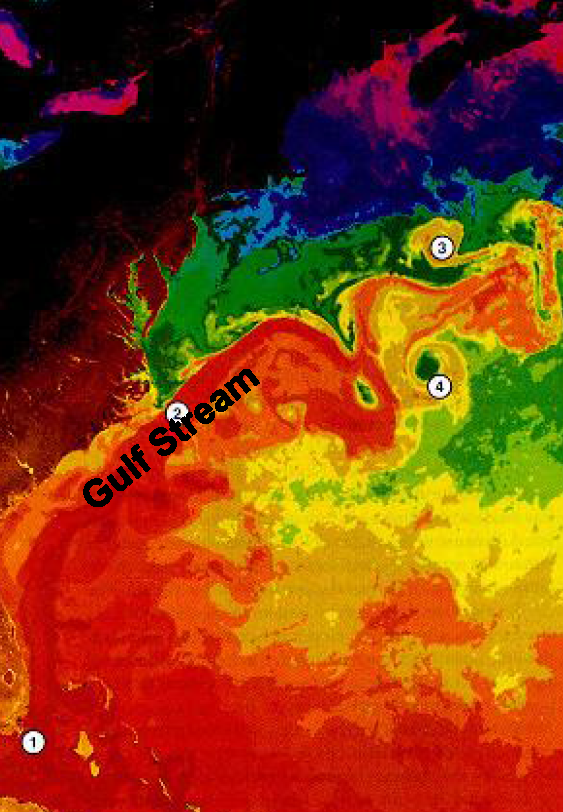
Climate includes a forced part that is directly related to "external" factors like how much sunlight there is. If we know the change in forcing - such as the seasonal change from winter to summer or an ongoing increase in atmospheric CO2 - in principle we can predict the climate change.
Climate also includes an internal part that changes spontaneously. This is the same kind of process that generates turbulence in the wake of a car, creates the weather, and makes ocean currents meander and eddy (figure). There are theoretical limits to how far in advance internal changes can be predicted. Phenomena with such names as El Nino-Southern Oscillation and Atlantic Multidecadal Variability produce climate variations, but how large an effect they have on multi-year trends in global mean surface temperature is a subject of current research.

Next: Is global warming caused by humans or nature?
Return to front page.
Last modified: 21 July 2018